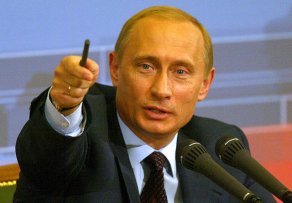
Photo: the Kremlin
For observers who are confined by the boundaries of conventional strategic sense, every day of Russia’s military intervention in Syria brings fresh surprises. Indiscriminate strikes against Turkey-backed and CIA-trained opposition groups (which could not possibly be mistaken for ISIS) were followed by deliberate violations of Turkey’s airspace, and then by the spectacular cruise missile salvo from warships in the Caspian Sea. More astonishing turns are almost certain to come, prompting more reevaluation of the power projection capabilities that Russia brings to bear in this high-risk enterprise.
Good morning, Latakia
The intervention, which President Vladimir Putin preferred not to announce in his address to the U.N. General Assembly on September 26, could become an exemplar of achieving maximum political effect from very limited application of force. The three dozen or so combat planes deployed to the hastily prepared airbase outside Latakia perform 20 to 30 sorties a day. That would not have made much of a difference in the U.S.-led air campaign against ISIS that has been going on for more than a year. What makes a difference is targeting opposition groups of various persuasions that were not anticipating such treatment. This tactical surprise is by definition short-term, and in order to continue making a difference — and for the campaign to really resonate — Russia needs to escalate.
- Read the full text at the Brookings blog Order from Chaos, where it was published 9 October 2015.